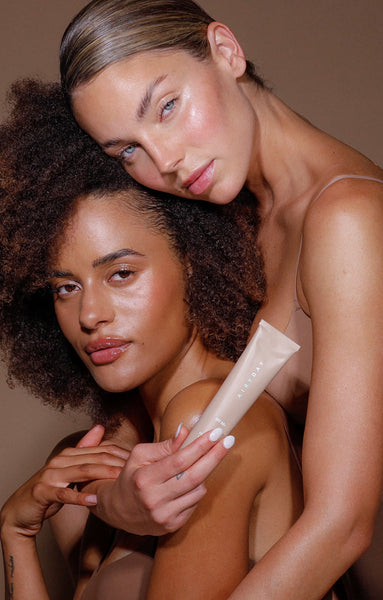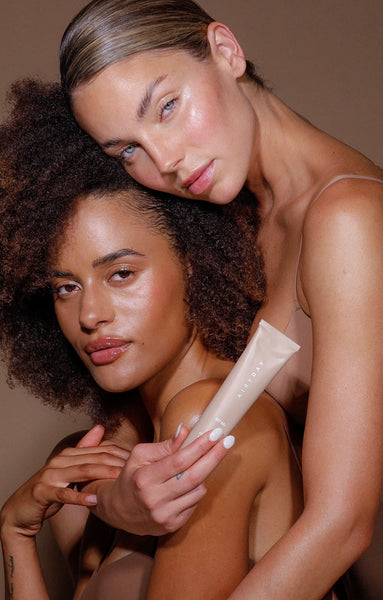HOW DOES SUNSCREEN WORK?
Did you know, sun damage and overexposure to the sun puts you at risk for skin cancers and ageing? Fact!
With 2 in 3 Australians being diagnosed with skin cancer and having the highest rates of skin cancer in the world, wearing sun protection has never been more important.
By creating a protective layer or shield on the skin, these tested sunscreen formulas prevent those pesky UVA and UVB rays from penetrating into the epidermis of the skin, that ultimately cause damage.
But how does a sunscreen actually work?
In the sunscreen space, there are active ingredients found in sunscreens that protect from UV rays in two ways, either as UV absorbers or UV reflectors.
UV absorbers, otherwise, knows as chemical sunscreens, absorb the UV radiation and convert it to low levels of heat. UV reflectors, also known as physical or mineral sunscreens, absorb and scatter UV radiation to prevent penetration, which come in the form of Zinc or Titanium Dioxide actives.
Together they protect against UVA rays, which penetrate the deeper layers of the skin and contribute to skin cancer and damaging DNA, and UVB rays which are known to cause sun burn and put you at risk of skin cancer. Protecting against both UVA and UVB rays is labelled as ‘Broad Spectrum’ protection on your sunscreen packaging and is strongly recommended for the best protection i.e. protecting you from premature ageing, burning and higher risk of skin cancer.
What is SPF and what does it mean?
Labels on sunscreen packaging can get very confusing. Water resistance, SPF, lots of numbers, but what does it all mean? We break down the key terms and need-to-knows to ensure you’re in the know when picking out your perfect sunscreen.
SPF: The term SPF, or Sun Protection Factor is the measure of how well your sunscreen protects your skin from sunburn. The rating (15, 30 or 50 and etc) indicates the amount of UVB radiation that potentially reaches your skin, if it’s been applied correctly. For example, an SPF30 is estimated to filter 96.7% of UVB radiation with 1/30th (3.3%) of UV reaching the skin, whilst a SPF50 is estimated to filter 98% of UVB radiation with 1/50th (2%) reaching the skin.
The + sign: As expected, the sign means ‘more than’. As an example, if you have an SPF50+, it must provide at least at SPF60. To remove any margin of error, laboratories will test for SPF60 to ensure that maximum protection is granted.
Broad-spectrum: This term tells us that our sunscreen formula filters both UV and UVB rays. It is always recommended that a broad-spectrum formula is used for maximum protection.
Water-resistance: Whilst there is no such thing as a waterproof formula, they can be water resistance. The term means that it does not come off the skin during swimming, exercise or towelling for an allocated amount of time i.e. 40 minutes to 4 hours. However, even if a formula states 4 hours water resistance, sunscreen should still be applied every 2 hours.
Yes, sunscreen is important.
Sunscreen is an absolute must and the best way to protect your skin is using a high-level broad-spectrum sunscreen that has been tested to protect you from both UVA and UVB rays. With skin cancer rates and damage at an all time high in Australia, ensuring you find and wear a sunscreen everyday is a must.
- SPF30 is great, but SPF50+ is even better.
- Apply at least ¼ teaspoon to the face 20 minutes before sun exposure and read the directions for use.
- Ensure you’re wearing a TGA listed and tested formula that meets the highest standards of testing and efficacy.
- Reapply 2 hours after use, regardless of water resistance claim.
- Hats, sunglasses and protective clothing is crucial for extra protection.











